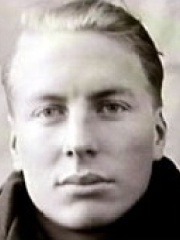
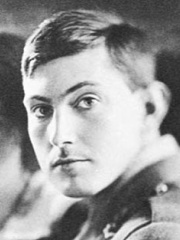
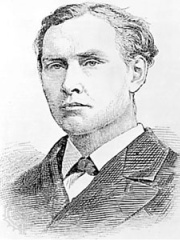
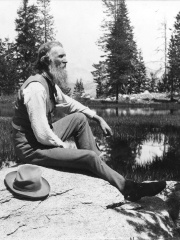

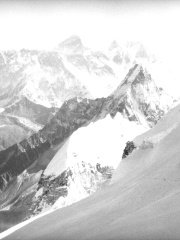
The Most Famous
MOUNTAINEERS from United Kingdom
This page contains a list of the greatest British Mountaineers. The pantheon dataset contains 56 Mountaineers, 7 of which were born in United Kingdom. This makes United Kingdom the birth place of the 2nd most number of Mountaineers.
Top 7
The following people are considered by Pantheon to be the most legendary British Mountaineers of all time. This list of famous British Mountaineers is sorted by HPI (Historical Popularity Index), a metric that aggregates information on a biography's online popularity.

1. Andrew Irvine (1902 - 1924)
With an HPI of 71.98, Andrew Irvine is the most famous British Mountaineer. His biography has been translated into 28 different languages on wikipedia.
Andrew Comyn "Sandy" Irvine (8 April 1902 – 8 or 9 June 1924) was a British mountaineer who took part in the 1924 British Mount Everest expedition, the third British expedition to the world's highest mountain. He and his climbing partner George Mallory disappeared somewhere high on the mountain's Northeast Ridge, and were reportedly last seen alive at an indeterminate distance from the summit. Mallory's body was found in 1999, and Irvine's partial remains were discovered in 2024.

2. George Mallory (1886 - 1924)
With an HPI of 69.22, George Mallory is the 2nd most famous British Mountaineer. His biography has been translated into 39 different languages.
George Herbert Leigh-Mallory (18 June 1886 – 8 or 9 June 1924) was an English mountaineer who participated in the first three British Mount Everest expeditions from the early to mid-1920s. He and his climbing partner Andrew "Sandy" Irvine were reported to be last seen ascending near Everest's summit during the 1924 expedition, sparking debate as to whether they reached it before they died. Born in Cheshire, England, Mallory became a student at Winchester College, where a teacher recruited him for an excursion in the Alps, and he developed a strong natural climbing ability. After graduating from Magdalene College, Cambridge, where he became friends with prominent intellectuals, he taught at Charterhouse School while honing his climbing skills in the Alps and the English Lake District. He pioneered new routes and became a respected figure in the British climbing community. His service in the First World War interrupted his climbing, but he returned with renewed vigour after the war. Mallory's most notable contributions to mountaineering were his expeditions to Everest. In 1921, he participated in the first British Mount Everest reconnaissance expedition, which established the North Col-North Ridge as a viable route to the summit. In 1922, he took part in a second expedition to attempt the first ascent of Everest, in which his team achieved a world altitude record of 27,300 ft (8,321 m) using supplemental oxygen. They were awarded Olympic gold medals for alpinism. During the 1924 expedition, Mallory and Irvine disappeared on Everest's Northeast Ridge. They were last seen alive approximately 800 vertical feet (240 metres) from the summit, sparking debate as to whether one or both reached it before they died. Mallory's body was found in 1999 by the Mallory and Irvine Research Expedition at 26,760 feet (8,160 metres), along with personal effects. The discovery provided clues, but no definitive proof about whether they reached the summit. When asked by a reporter why he wanted to climb Everest, Mallory purportedly replied, "Because it's there."

3. Edward Whymper (1840 - 1911)
With an HPI of 65.89, Edward Whymper is the 3rd most famous British Mountaineer. His biography has been translated into 31 different languages.
Edward Whymper FRSE (27 April 1840 – 16 September 1911) was an English mountaineer, explorer, illustrator, and author best known for the first ascent of the Matterhorn in 1865. Four members of his climbing party were killed during the descent. Whymper also made important first ascents on the Mont Blanc massif and in the Pennine Alps, Chimborazo in South America, and the Canadian Rockies. His exploration of Greenland contributed an important advance to Arctic exploration. Whymper wrote several books on mountaineering, including Scrambles Amongst the Alps.

4. John Muir (1838 - 1914)
With an HPI of 62.23, John Muir is the 4th most famous British Mountaineer. His biography has been translated into 43 different languages.
John Muir ( MURE; April 21, 1838 – December 24, 1914), also known as "John of the Mountains" and "Father of the National Parks", was a Scottish-born American naturalist, author, environmental philosopher, botanist, zoologist, glaciologist, and early advocate for the preservation of wilderness in the United States. His books, letters and essays describing his adventures in nature, especially in the Sierra Nevada, have been read by millions. His activism helped to preserve the Yosemite Valley and Sequoia National Park, and his example has served as an inspiration for the preservation of many other wilderness areas. The Sierra Club, which he co-founded, is a prominent American conservation organization. In his later life, Muir devoted most of his time to his wife and the preservation of the Western forests. As part of the campaign to make Yosemite a national park, Muir published two landmark articles on wilderness preservation in The Century Magazine, "The Treasures of the Yosemite" and "Features of the Proposed Yosemite National Park"; this helped support the push for US Congress to pass a bill in 1890 establishing Yosemite National Park. The spiritual quality and enthusiasm toward nature expressed in his writings has inspired readers, including presidents and congressmen, to take action to help preserve large nature areas. John Muir has been considered "an inspiration to both Scots and Americans". Muir's biographer, Steven J. Holmes, believes that Muir has become "one of the patron saints of twentieth-century American environmental activity", both political and recreational. As a result, his writings are commonly discussed in books and journals, and he has often been quoted by nature photographers such as Ansel Adams. "Muir has profoundly shaped the very categories through which Americans understand and envision their relationships with the natural world", writes Holmes. Muir was noted for being an ecological thinker, political spokesman, and environmental advocate, whose writings became a personal guide into nature for many people, making his name "almost ubiquitous" in the modern environmental consciousness. According to author William Anderson, Muir exemplified "the archetype of our oneness with the earth", while biographer Donald Worster says he believed his mission was "saving the American soul from total surrender to materialism". On April 21, 2013, the first John Muir Day was celebrated in Scotland, which marked the 175th anniversary of his birth, paying homage to the conservationist.
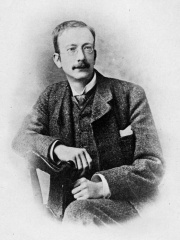
5. Albert F. Mummery (1855 - 1895)
With an HPI of 61.21, Albert F. Mummery is the 5th most famous British Mountaineer. His biography has been translated into 16 different languages.
Albert Frederick Mummery (10 September 1855, Dover, Kent, England – 24 August 1895, Nanga Parbat), was an English mountaineer and author. Although most notable for his many and varied first ascents put up in the Alps, Mummery, along with J. Norman Collie, Geoffrey Hastings, and two Gurkhas are also the first men in recorded history to have attempted to summit one of the Himalayan eight-thousanders. Their innovative, light-weight endeavour upon Nanga Parbat in 1895 proved ill-fated; Mummery and both Gurkhas died in an avalanche whilst reconnoitering the mountain's Rakhiot Face. The first man to summit on Nanga Parbat, the legendary Austrian mountaineer Hermann Buhl, described Mummery as "one of the greatest mountaineers of all time".

6. Verney Lovett Cameron (1844 - 1894)
With an HPI of 55.77, Verney Lovett Cameron is the 6th most famous British Mountaineer. His biography has been translated into 17 different languages.
Verney Lovett Cameron (1 July 1844 – 24 March 1894) was an English traveller in Central Africa and the first European to cross (1875) equatorial Africa from sea to sea.

7. Alison Hargreaves (1962 - 1995)
With an HPI of 45.11, Alison Hargreaves is the 7th most famous British Mountaineer. Her biography has been translated into 17 different languages.
Alison Jane Hargreaves (17 February 1962 – 13 August 1995) was a British mountaineer. Her accomplishments included scaling Mount Everest alone, without supplementary oxygen or support from a Sherpa team, in 1995. She soloed all the great north faces of the Alps in a single season—a first for any climber. This feat included climbing the difficult north face of the Eiger in the Alps. Hargreaves also climbed 6,812-metre (22,349 ft) Ama Dablam in Nepal. In 1995, Hargreaves intended to climb the three highest mountains in the world—Mount Everest, K2, and Kangchenjunga—unaided. On 13 May 1995, she became the first woman to reach summit of Everest without the aid of Sherpas or bottled oxygen; on 13 August, she died while descending from the summit of K2.
People
Pantheon has 7 people classified as British mountaineers born between 1838 and 1962. Of these 7, none of them are still alive today. The most famous deceased British mountaineers include Andrew Irvine, George Mallory, and Edward Whymper.
Deceased British Mountaineers
Go to all RankingsAndrew Irvine
1902 - 1924
HPI: 71.98
George Mallory
1886 - 1924
HPI: 69.22
Edward Whymper
1840 - 1911
HPI: 65.89
John Muir
1838 - 1914
HPI: 62.23
Albert F. Mummery
1855 - 1895
HPI: 61.21
Verney Lovett Cameron
1844 - 1894
HPI: 55.77
Alison Hargreaves
1962 - 1995
HPI: 45.11
Overlapping Lives
Which Mountaineers were alive at the same time? This visualization shows the lifespans of the 6 most globally memorable Mountaineers since 1700.

